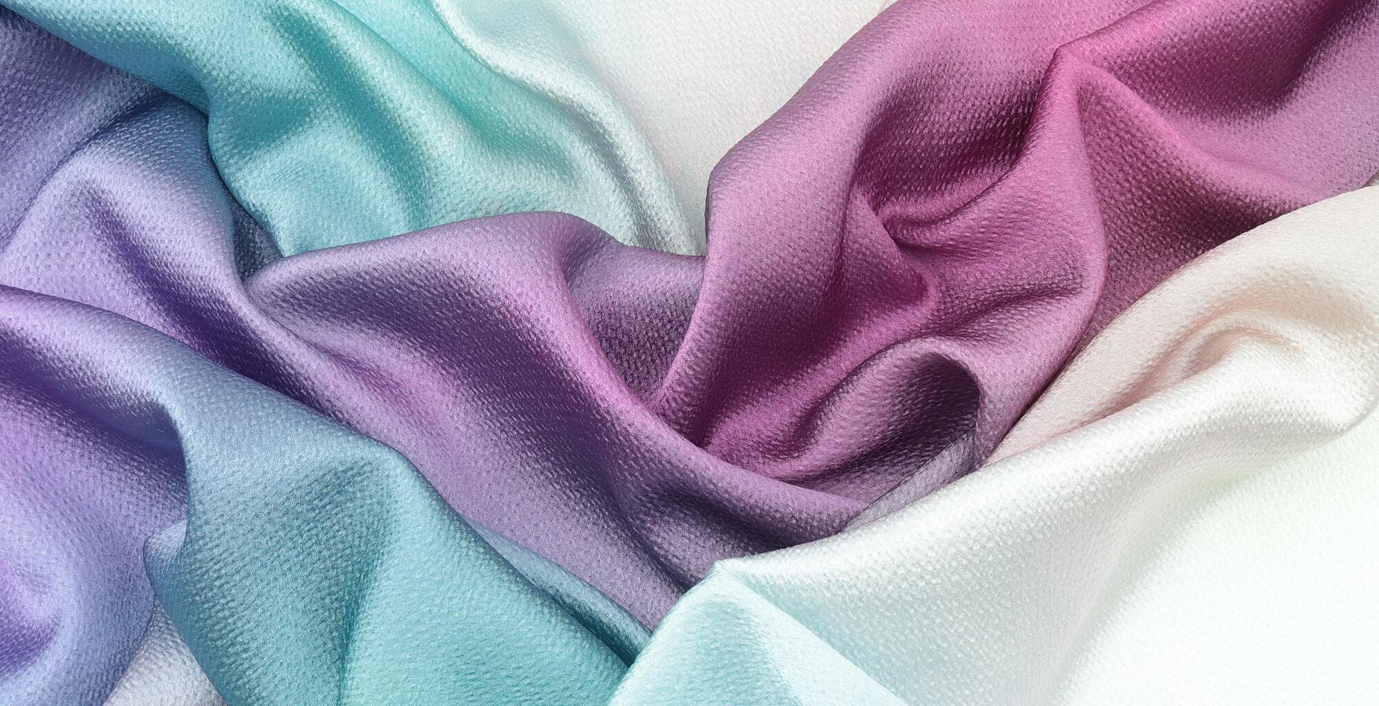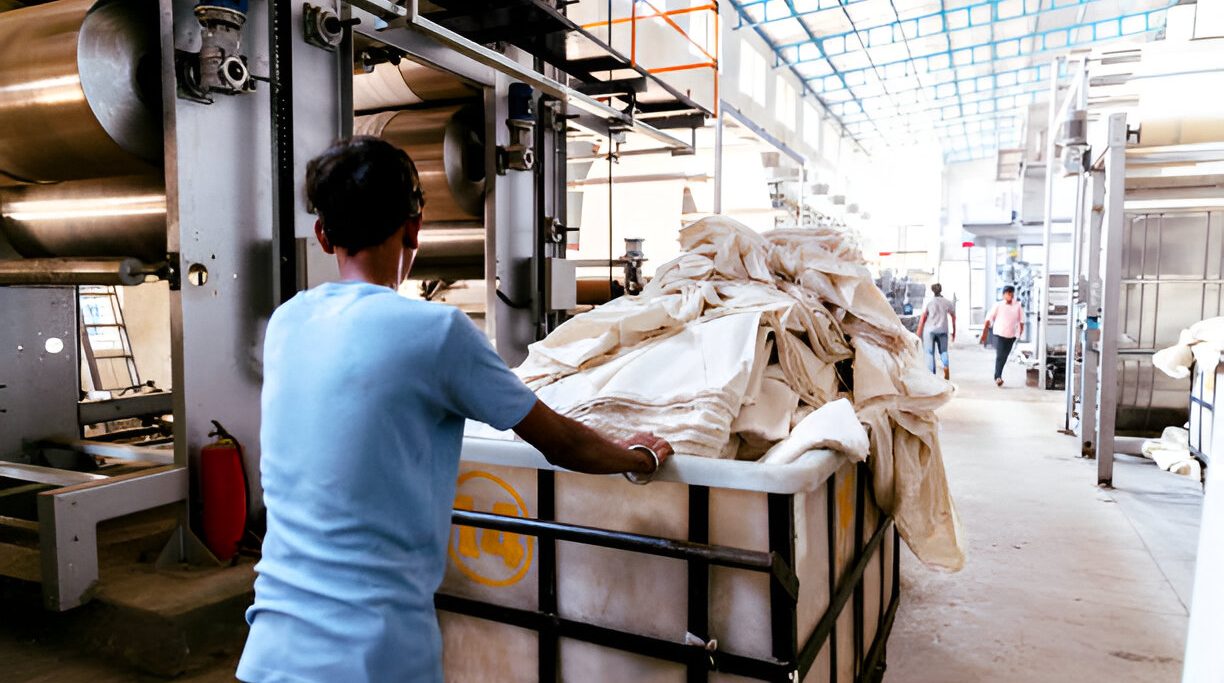Protective wears need to go through various processes before they actually come to you in a ready to wear form? Processes necessary to make them wearable, durable and add to the aesthetics of the clothes. In order to produce the fabrics which can be used by the end user. Each of these operations has its own value addition, right till the last stage of ‘finishing.’ It is in the finishing stage that the performance of the clothes are enhanced and the aesthetic value gets added..
Role of Cotton Monk
Fabric finishing techniques differ based on the texture and the purpose of the fabrics which we will elaborate about further in this blog. Every step listed below is a phenomenon where Cotton Monk can take the pole position for you and fulfil them as needed, we can make all kinds of fabric finishes.
Methods or Techniques for Finishing of Fabrics
After a fabric is constructed and comes out of the loom or a knitting machine, it is known as greige fabric. The greige fabric is an unfinished fabric and goes through the following processes in order to make it into a finished product:
1) Preparatory Processes for Textile Finishing
Many contaminants, including dirt, mud, sizing, oils, and other additives, maybe present in the unfinished cloth or grey item. These must be cleaned before proceeding towards finishing of the textiles.
∙ Singeing or Gassing
Singeing or Gassing is a procedure in which the protruding fibres or yarns from the surface of a textile or fabric is removed by burning in a machine. In the textile industry, it is advised to remove the loose fibres projecting out of the fabric in order to achieve various properties of the fabric such as higher wet ability, better dyeing properties, enhanced reflection, no “frosty” appearance, a softer surface, good printing clarity, increased visibility of the fabric structure, less pilling and reduced contamination by removing fluff and lint.
Typically, the procedure is to burn off the projecting strands by passing one or both sides of the fabric over a gas flame in a machine specifically engineered for this very process. This is achieved by allowing time of contact between the singeing flame and the fabric to practically a fraction of a second. Cellulose fabrics like cotton or linen are easily signed while man-made fibres can melt and harden under the heat. For thermoplastic fibres, other approaches include infrared or heat. The process of singeing yarns is known as “gassing.” It is generally the first stage following weaving or knitting.
∙ Bleaching
If there’s a requirement for the fabric to be finished as white in colour or to be given surface ornamentation, the natural colours of the fabric needs to be removed by the process of bleaching. Bleaching can be done in the yarn stage as well as in the constructed fabric. Suitable bleaching agents are used to remove the colour from the fabric, namely oxidizing or reducing bleaches.
All natural fabrics are bleached utilising oxidative processes using chemicals such as sodium hypochlorite, sodium chlorite, or hydrogen peroxide. Fabrics such as polyamide, poly-acrylics, and poly-acetates are often bleached using a reductive bleaching technique that employs sodium hydro-sulphite, a strong reducing agent. Optical Brightening Agents (OBA) are used in addition to bleaching to give the textile material a brilliant look.
2) Stabilizing Processes for Finishing of Textiles
Stabilizing processes are necessary to improve fibre attributes such as strength, lustre, and other characteristics.
∙ Mercerisation
Mercerising is the technique of treating cellulosic materials with cold or hot caustic (NaOH) solution in order to enhance their aesthetic, physical, and chemical qualities under certain conditions. To induce these modifications, the caustic actually rearranges the cellulose molecules in the fibre. For further benefits, high-end textiles may double or triple mercerisation. Mercerisation is done just after the bleaching of the textile. Caustic strength, dwell duration (feed rate), temperature, and neutralisation are all important variables to consider while mercerising. The fabric’s feed rate is likewise restricted by its strength and weight, and is typically set at 80 to 120 yards (73 to 110 m) per minute.
∙ Ammoniating
This process is done to improve the sheen, dye affinity, abrasion resistance, smoothness, and other properties of cotton and rayon fabrics.
The yarn or cloth is run through a weak ammonium solution at temperatures that cause swelling and shrinking. Then it is quickly washed in hot water and dried in hot air.
∙ Anti-Shrink Finish
The fibres have a tendency to return to their natural condition, causing fabric to shrink. The main objective of anti-shrink finish is to keep the fabric smooth and free from undesirable shrinkage. So this finish is referred to as anti-shrink or shrink resistant or shrink recovery finish. This finish is purely chemical and a permanent finish. Usually cotton, linen, viscose and cuprammonium rayon are finished using several procedures including immersion in cold water followed by hot water, steaming, resin, or a chemical treatment. The finishing process in which the cotton knitted fabrics are made not to shrink is known as “Anti-Shrink Treatment”.
∙ Tentering
The primary goal of tentering is to dry and prepare the cloth for subsequent processing. The tenter frames are made up of two endless chains with an adjustable spacing between them. This frame transports the fabric into the heated housing, where a blast of hot air eliminates any moisture contained in the cloth. Tenter fames hold the fabric with special pins. The chain is spread apart to the desired width of the fabric. The fabric is moved through dying units. Later the fabric is rolled on cylinders.
∙ Decating
Decating improves lustre, appearance, feel as well as preshrinks the fabric. It may be applied to woven as well as knitted fabrics. Wet decating and dry decating are the two methods adopted. Wet decating is generally used for woollen fabrics. The fabric is wound on a perforated roller and treated in hot water or steam boiler. In dry decating, the fabric is passed together with a blanket around a perforated cylinder. The moist heat causes the fibres to become wrinkle free.
∙ Enzyme Wash or Bio Wash
Sometimes enzymes are used to produce stone washed effects on fabrics. Enzymes are organic catalysts that are used for speeding up a chemical reaction. This process is less damaging to fabrics than actual stone washing. Also, it gives a very soft feel to the treated fabric. This process is mostly used in cotton and linen fabric, and as of today it is popular for denim fabrics.
3) Textural Processes for Finishing of Textiles
Textural processes are meant for improving the texture of the fabric such as stiffness, smoothness, weight or strength.
∙ Temporary Stiffening
Fabrics, notably cotton and linen, are temporarily stabilised and stiffened by the use of a firming agent, which is frequently a starch solution. It is usually referred to as ‘starching’ or ‘temporary stiffening.’ This is done when preparing the warp for weaving, and is referred to as ‘sizing’ and ‘dressing.’ The term ‘dressing’ refers to the warp of a woollen fabric. In addition to starch, flour, dextrine, glue, shellac, lipids, wax, and paraffin are used to stiffen textiles. Cotton textiles are sometimes stiffened with clay, chalk, barium sulphate, calcium sulphate, or magnesium sulphate. At times back starching is also done in which only the back side of the fabric is starched.
Temporary stiffening is necessary to keep the cloth fresh until it is employed to make a product. Stiffening also makes it easier to cut the cloth into designs for textile products.
∙ Permanent Stiffening
Fabrics that have been permanently strengthened require less laundry and therefore gets become more durable. Chemical activities affect the cellular structure of the fibre to achieve permanent stiffening. This technique smoothens the cloth and makes it dirt resistant because dirt slides off rather than clings to it. Ankord, Basco, Clearight, Kandarized, Saylerizing, Sheercroft, Staze- Right, and Turbenizing are some of the permanent finishes. They all contribute to the fabric’s tensile strength, sheen, shrinkage resistance, crispness, abrasion resistance, and overall look. Turbenizing is done to prevent the cloth from needing to be starched for the duration of its life. This process is mostly used for fine yarn cotton fabrics.
∙ Weighting
By soaking a fabric in a solution containing metallic salts, the weight of some textiles, such as silk, may enhance the fabric to improve its feel and drape quality. Weight is occasionally added to low-grade wool textiles by felting short wool fibres into the cloth. These flock fibres are obtained by washing, brushing, and sheering wool garments. Excessive weighing weakens the cloth.
∙ Calendering
Calendering is a fabric finishing procedure in which fabric is folded in half and run through rollers at high temperatures and pressures. Calendering is used to create a watered look on textiles such as moire, as well as cambric and some types of sateen. The process makes the fabric smoother and more glossy. Fabrics that have had calendering feel thin, shiny and do not last for long.
∙ Embossing
Raised figures or designs are generated on the surface of the textiles via embossing. This is accomplished by running the fabric through hot engraved rollers. Except for wool, this method can be used on any fabric. The embossing becomes permanent when the procedure is paired with particular chemical resins.
∙ Moireing
Moireing is accomplished by using ridged rollers to create a waved or wet impression on a textile cloth. When the design is heat-set, it becomes permanent. Moire patterns on rayon fabrics are not permanent. It lingers on silk for a longer period but gradually fades. Moireing is permanent on acetate, nylon, and other thermoplastic fibres because these textiles melt when exposed to heat. When the design cools, it conforms and hardens on the fabric.
∙ Beetling
The beetling procedure is used on linen or cotton. The cloth is hammered with massive wooden blocks to create a firm, flat, sheen-like surface. Beetling imparts the feel and look of linen to cotton textiles. The strands of the cloth flatten permanently as a result of this operation.
∙ Raising
Several ways of pulling fibre ends to the surface of a fabric are used to give it a hairy appearance. This cloth is referred to as raised fabric. It differs from pile structure, which is woven or knitted with additional strands put on the fabric (such as tufting). Napping, Sanding, Gigging, and Tigering are some techniques of raising.
Cotton Monk has been in this industry for quite a long time, thus, we are someone who can gratify your needs of this industry. There are several types of finishes as you’ve seen in this blog and we can make all kinds of special finishes in the fabric with quality at par. This makes us a go to company for all Protective Clothing manufacturing where the special fabric finishes are required the most.



